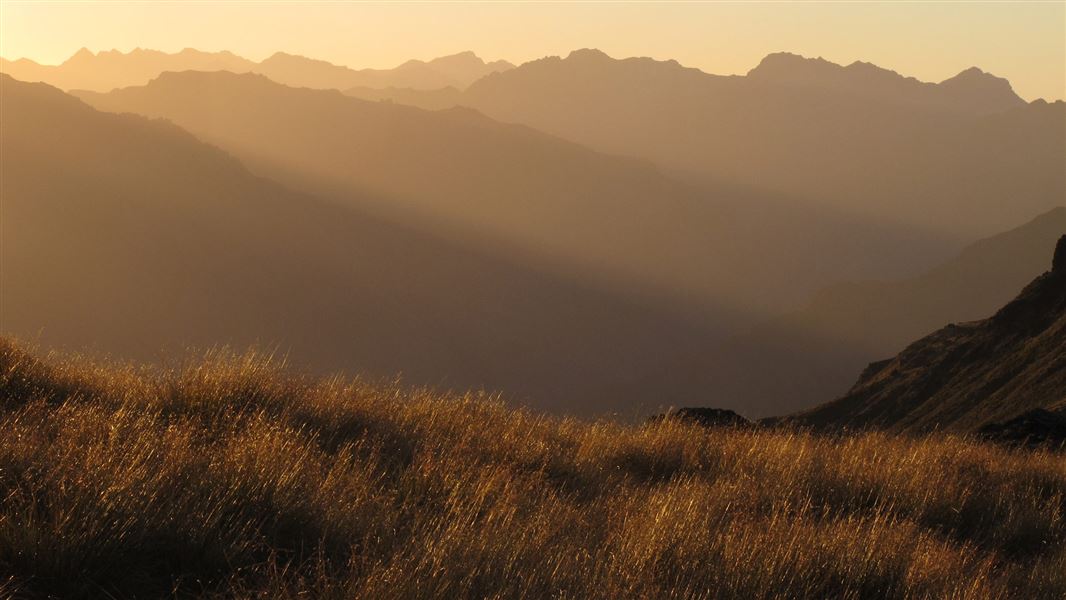The Eyre Mountains/Taka Ra Haka have long attracted the Māori, European explorer, pastoralist and preservationist.
Māori named the area Taka Ra Haka in reference to the sun setting or dancing on the mountain tops at the end of the day. The Eyre Mountains were named by Captain J.L. Stokes of the Acheron survey (1848 – 51) after the explorer Edward John Eyre. Eyre was appointed Lieutenant-Governor of New Zealand from 1848 – 53 for the lower North Island and the whole of the South Island.
Southland’s major rivers such as the Waiau, Mataura, Oreti and Clutha were all used by early Māori as pathways to reach the resources of the interior. Southern Māori travelled into the Eyre Mountains following the Oreti River from its mouth at Omaui – Foveaux Strait/Te Ara a Kiwa to its upper reaches, on route to Lake Wakatipu and South Westland. The Upper Mataura River was also followed as part of a trail from the south through to Central Otago and beyond.
Māori moved through the area in search of food and to locate sources of stone such as the precious Pounamu/greenstone and Argillite, highly valued for tool making. Māori have held cultural and spiritual connections to the Eyre Mountains landscape, from the earliest ventures of the Waitaha and Katimamoe people, through many generations to the present day Ngāi Tahu, who will have an active role in the ongoing management of the park.
Early sheep farmers were not deterred by this rugged landscape and major pastoral runs were established across Northern Southland in the late 1850s and 1860s. Stations such as Fairlight, Cainard and Mt. Nicholas have strong historical links to this environment where old musterers’ huts remain to tell some of the story of the high country farming life. Beech Hut, built about 1913 in the Upper Mataura, is one of the oldest musterers’ huts in Southland. Along with the Dog Box Hut situated in Eyre Creek, they were part of a network of mustering huts across the Eyre Mountains and these now provide the tramper with a unique historical experience.
The former New Zealand Forest Service, Department of Lands and Survey and now Department of Conservation have all played key roles in protecting natural values in the Eyre Mountains. Intensive wild animal control efforts began in the 1970s in what was then State Forest Park and a myriad of tracks and huts were created in response to this cause. Much of the higher country was eventually retired from pastoral grazing and the initial protected area expanded to better represent the diverse values of the landscape. This has lead to the formation of today’s Eyre Mountains/Taka Ra Haka Conservation Park.
Dog Box Hut
Dog Box Hut, the smallest hut in the land, was built around 1916 and used by musterers in the 1920s during the autumn muster. Today it captures the lost era of the horseback high country muster. Read the history of Dog Box Hut.
